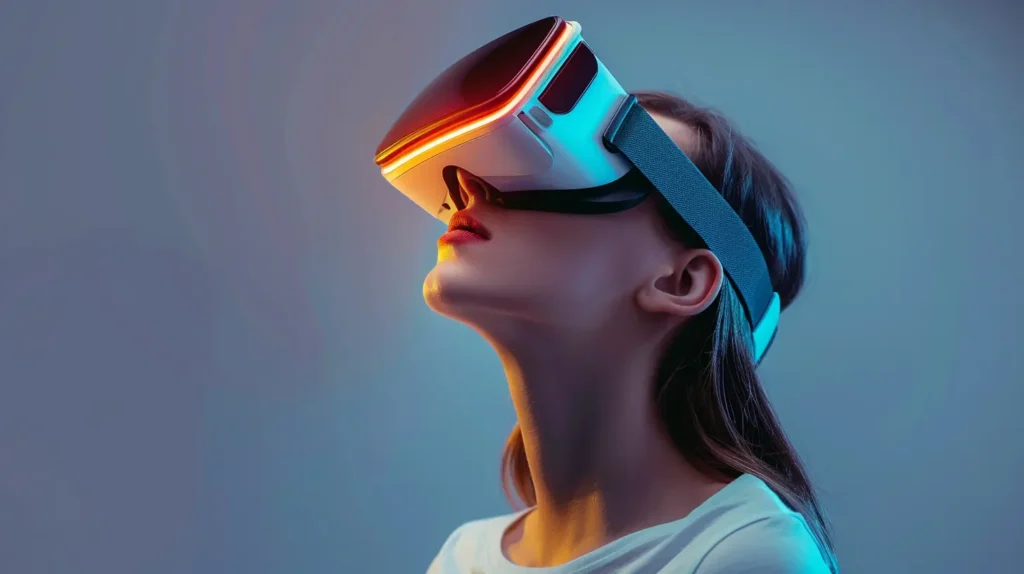Have you ever felt that dizzying sensation of spinning around too quickly as a child? Or experienced a brief moment of vertigo when standing up too fast? Those familiar feelings are caused by your vestibular system – a remarkable inner ear mechanism that helps you maintain balance and spatial awareness.
But what if I told you that deliberately stimulating this system could have profound therapeutic benefits? From improving balance and coordination to enhancing cognitive function and even managing neurological disorders, vestibular stimulation is an emerging field that’s captivating researchers and healthcare professionals alike.
Imagine a simple, non-invasive technique that could potentially help stroke survivors regain their mobility, alleviate the debilitating symptoms of Parkinson’s disease, or even improve focus and attention in individuals with ADHD or autism spectrum disorder. It may sound like science fiction, but vestibular stimulation is very much a reality, and its applications are both fascinating and wide-ranging.
What is Vestibular Stimulation?

At its core, vestibular stimulation involves activating the intricate network of sensors and pathways that make up your vestibular system. This can be achieved through various methods, such as gentle rotational movements, electrical currents, or even temperature changes applied to specific areas of the inner ear.
But how can something as simple as stimulating your balance system have such profound effects on the body and mind? The answer lies in the intricate connections between the vestibular system and various brain regions responsible for everything from motor control to cognitive function and emotional regulation.
What is the Vestibular System?
The Vestibular System is responsible for maintaining balance, spatial orientation, and coordinating eye movements. It is located in the inner ear and consists of several important parts:
Semicircular Canals
These three looped structures detect rotational movements of the head. Each canal corresponds to a different plane of motion—horizontal, anterior, and posterior—and contains a fluid called endolymph that moves when the head rotates. This movement bends hair cells within the canals, sending signals to the brain about the direction and speed of rotation.
Otoliths
These structures include two main parts—the utricle and saccule—which sense linear accelerations and gravity. Otoliths contain tiny calcium carbonate crystals embedded in a gel-like substance. When you move or change position, these crystals shift, bending hair cells and providing information about head tilt and gravitational forces.
Together, these components supply the brain with critical data needed for balance and spatial orientation. They work seamlessly with other sensory systems like vision and proprioception to help us navigate our environment effectively.
What are some examples of Vestibular Stimulation?
Vestibular stimulation works by activating the vestibular system using different methods. Each method affects the system in its own way, causing various physical responses. Here are the main methods:
- Galvanic Vestibular Stimulation (GVS): This technique involves placing electrodes behind the ears on the mastoid processes. These electrodes deliver a small electric current that directly stimulates the vestibular nerves. GVS can create sensations of movement and is used to study balance and spatial orientation.
- Transcranial Direct Current Stimulation (tDCS): This non-invasive method requires placing electrodes on the scalp and passing a gentle electric current through them. It affects the activity of neurons in the brain areas linked to the vestibular system. tDCS is being explored for its potential to improve cognitive function and regulate mood.
- Stochastic Vestibular Stimulation: This approach uses random electrical noise to activate the vestibular system. Unlike GVS and tDCS, stochastic stimulation provides a continuous and nonspecific stimulus that can enhance sensory processing and boost balance control.
What are the Benefits of Vestibular Stimulation?
Vestibular stimulation can positively affect various aspects of health and well-being. By targeting the vestibular system, it promotes balance, spatial orientation, and eye movement control. Some key benefits include:
- Enhanced Balance and Coordination: Regular vestibular stimulation helps individuals maintain better postural stability. This is particularly beneficial for those with balance disorders or age-related balance decline.
- Improved Spatial Awareness: It aids in understanding one’s position in space, reducing disorientation and improving overall movement efficiency.
- Eye Movement Control: The stimulation supports smooth and coordinated eye movements, crucial for activities like reading and tracking moving objects.
- Cognitive Function: Research indicates that vestibular stimulation may enhance cognitive processes such as attention, memory, and spatial navigation.
- Mood Regulation: It has been found to influence mood positively, potentially reducing symptoms of anxiety and depression.
- Therapeutic Applications: Conditions like Ménière’s disease, vestibular neuritis, and Parkinson’s disease may see symptomatic relief through targeted vestibular interventions.
This wide range of benefits showcases the potential of vestibular stimulation as a non-invasive approach to improve various physical and mental health outcomes.
Applications of Vestibular Stimulation
Vestibular stimulation has shown promising applications across various conditions and disorders, particularly those involving balance, motor control, and cognitive function. The following are some key areas where vestibular stimulation techniques have been explored and utilized:
Vestibular Rehabilitation
Treatment of Balance Disorders: Vestibular stimulation, particularly galvanic vestibular stimulation (GVS), has been employed in the rehabilitation of balance disorders, such as unilateral and bilateral vestibular hypofunction, Ménière’s disease, and vestibular neuritis. By stimulating the vestibular system, GVS can facilitate the development of new neural pathways and compensatory mechanisms, improving postural stability and reducing dizziness and vertigo.
Recovery from Vestibular Injuries or Disorders: GVS has been used to aid in the recovery process following vestibular injuries or disorders, such as vestibular schwannoma (acoustic neuroma) surgery or ischemic central lesions affecting the vestibular system. The stimulation can help retrain the brain’s ability to process vestibular information and promote functional recovery.
Neurological Conditions
Parkinson’s Disease: Vestibular stimulation has shown potential in improving balance, gait, and motor function in individuals with Parkinson’s disease. By activating vestibular pathways and modulating related brain regions, vestibular stimulation may help alleviate some of the motor symptoms associated with the condition.
Stroke Rehabilitation: GVS has been explored as a therapeutic approach in stroke rehabilitation, particularly for improving balance, posture, and gait. The stimulation can facilitate the reorganization of neural networks and promote functional recovery in stroke survivors.
Multiple Sclerosis: Preliminary research has investigated the use of vestibular stimulation in individuals with multiple sclerosis, with the aim of improving balance, mobility, and reducing the risk of falls.
Cognitive and Psychological Disorders
Attention and Focus Enhancement: Vestibular stimulation has been studied for its potential to enhance attention, focus, and cognitive performance, particularly in individuals with attention deficit hyperactivity disorder (ADHD) or autism spectrum disorder (ASD).
Anxiety and Depression Management: Some research has explored the potential of vestibular stimulation in modulating anxiety and depression symptoms, possibly by influencing the brain’s emotional processing and regulation pathways.
Autism Spectrum Disorder: Vestibular stimulation has been investigated as a potential therapeutic approach for individuals with ASD, as it may help regulate sensory processing, improve balance and motor skills, and enhance social interaction and communication.
Vestibular Stimulation Mechanisms of Action
While the specific mechanisms underlying the therapeutic effects of vestibular stimulation are not fully understood, researchers have proposed several potential pathways and processes that may contribute to its observed benefits.
Activation of Vestibular Pathways
The primary mechanism of vestibular stimulation involves the direct activation of the vestibular system, which comprises the semicircular canals and otolith organs in the inner ear. These structures are responsible for detecting head movements and maintaining balance and spatial orientation.
By applying mechanical, electrical, or thermal stimuli to the vestibular system, vestibular stimulation techniques can modulate the firing patterns of the vestibular nerve and its associated neural pathways. This activation can trigger a cascade of neurological responses and adaptations throughout the brain.
Influence on Brain Regions and Neural Networks
The vestibular system has extensive connections with various brain regions, including the cerebellum, thalamus, brainstem, and cortical areas involved in motor control, spatial processing, and cognitive function. Vestibular stimulation can influence the activity and connectivity within these neural networks, potentially leading to functional changes and neuroplasticity.
For example, vestibular stimulation has been shown to modulate activity in the parietal cortex, which is involved in spatial awareness and attention, as well as the prefrontal cortex, which plays a role in executive function and cognitive control. These changes may contribute to the observed improvements in balance, motor skills, and cognitive performance.
Modulation of Neurotransmitter Systems
Vestibular stimulation may also influence the release and regulation of various neurotransmitters, such as dopamine, acetylcholine, and gamma-aminobutyric acid (GABA). These neurotransmitters are involved in a wide range of physiological and cognitive processes, including motor control, attention, learning, and emotional regulation.
For instance, vestibular stimulation has been associated with increased dopamine release in the basal ganglia, a brain region crucial for movement and motor coordination. This dopaminergic modulation may contribute to the potential benefits observed in conditions like Parkinson’s disease, where dopamine deficiency is a key factor.
Additionally, vestibular stimulation may influence the cholinergic system, which is involved in attention, learning, and memory processes. This could potentially explain the reported improvements in cognitive function and attention observed in some studies.
While the exact mechanisms of action are still being investigated, it is clear that vestibular stimulation can influence various neural pathways, brain regions, and neurotransmitter systems, leading to a range of potential therapeutic effects. As research continues, a more comprehensive understanding of these mechanisms may emerge, paving the way for more targeted and effective applications of vestibular stimulation techniques.
Unlock Your Body’s Potential with Vestibular Stimulation
The field of vestibular stimulation is a fascinating and rapidly evolving area of research that holds immense promise for a wide range of therapeutic applications. From improving balance and motor function to enhancing cognitive performance and managing neurological and psychological disorders, the potential benefits of this non-invasive approach are truly remarkable.
If you or a loved one are seeking innovative approaches to address balance, motor, cognitive, or neurological challenges, it may be worth exploring the potential of vestibular stimulation. Consult with healthcare professionals and stay informed about the latest developments in this rapidly evolving field.
Today, we talked about Vestibular Stimulation. Here are some other articles you might enjoy:
Get Started with Somatic Workouts: Try these now!
What you need to know about Sensory Stimulation



